Abstract
It is unclear if the relative content of NO3− and reduced N in xylem exudate provides an accurate estimate of the percentage reduction of concurrently absorbed NO3− in the root. Experiments were conducted to determine whether NO3− and reduced N in xylem exudate of vegetative, nonnodulated soybean plants (Glycine max [L.] Merr., `Ransom') originated from exogenous recently absorbed 15NO3− or from endogenous 14N pools. Plants either were decapitated and exposed to 15NO3− solutions for 2 hours or were decapitated for the final 20 minutes of a 50-minute exposure to 15NO3− in the dark and in the light. Considerable amounts of 14NO3− and reduced 14N were transported into the xylem, but almost all of the 15N was present as 15NO3−. Dissimilar changes in transport of 14NO3−, reduced 14N and 15NO3− during the 2 hours of sap collection resulted in large variability over time in the percentage of total N in the exudate which was reduced N. Over a 20-minute period the rate of 15N transport into the xylem of decapitated plants was only 21 to 36% of the 15N delivered to the shoot of intact plants. Based on the proportion of total 15N which was found as reduced 15N in exudate and in intact plants in the dark, it was estimated that 5 to 17% of concurrently absorbed 15NO3− was reduced in the root. This was much less than the 38 to 59% which would have been predicted from the relative content of total NO3− and total reduced N in the xylem exudate.
Full text
PDF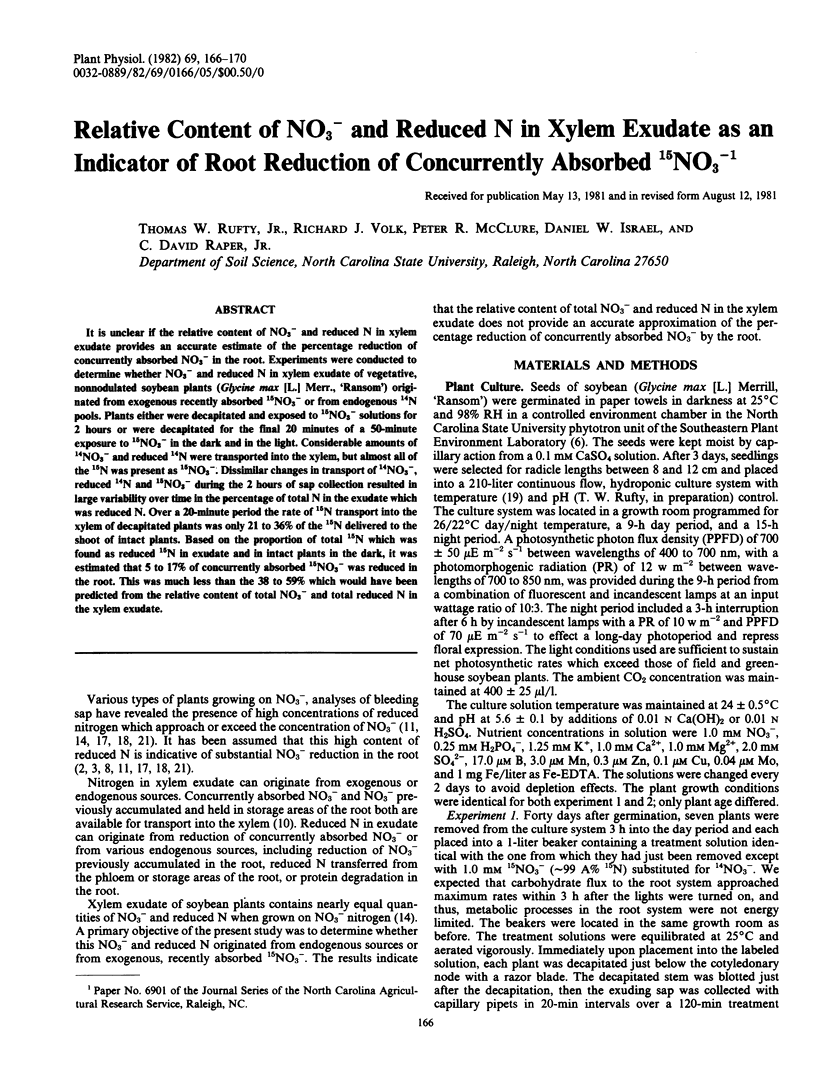
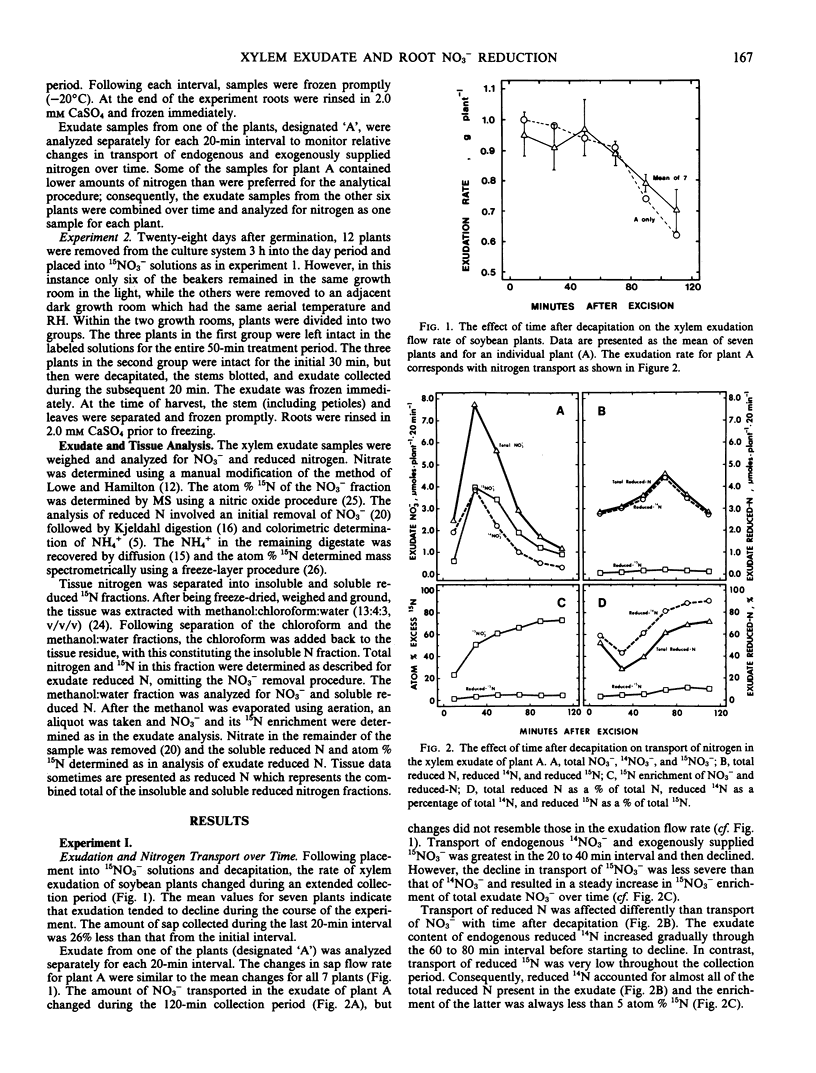
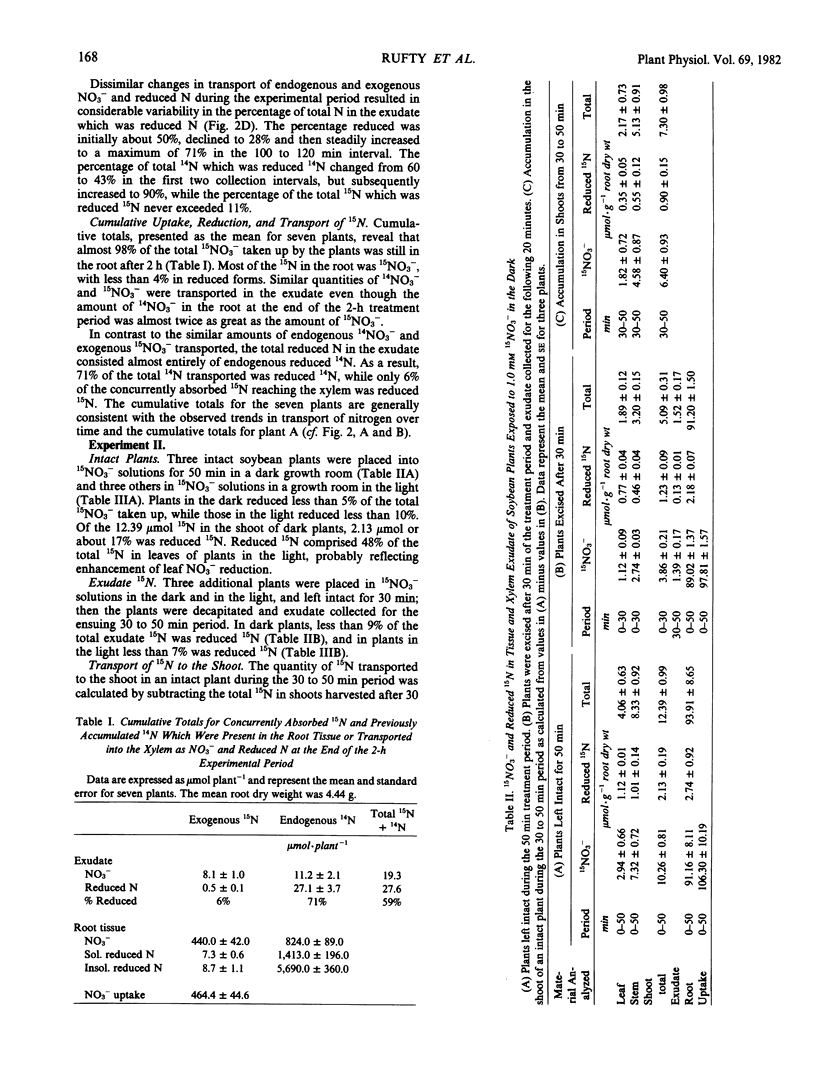
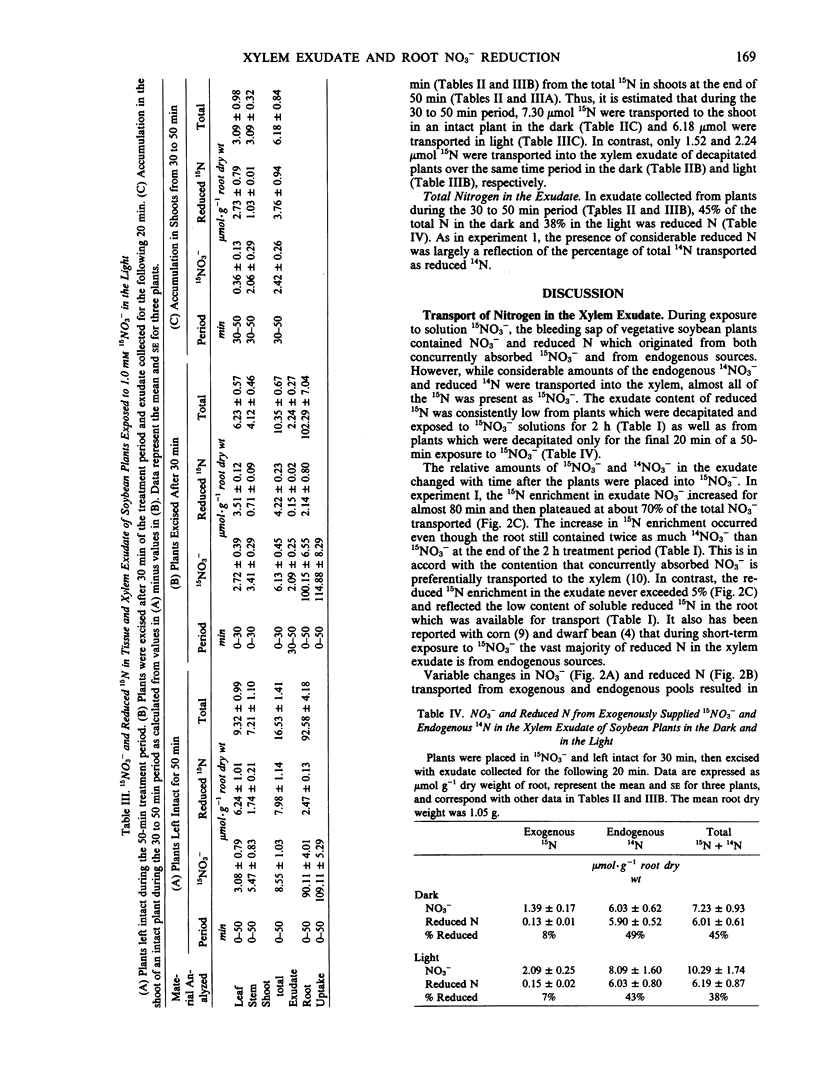
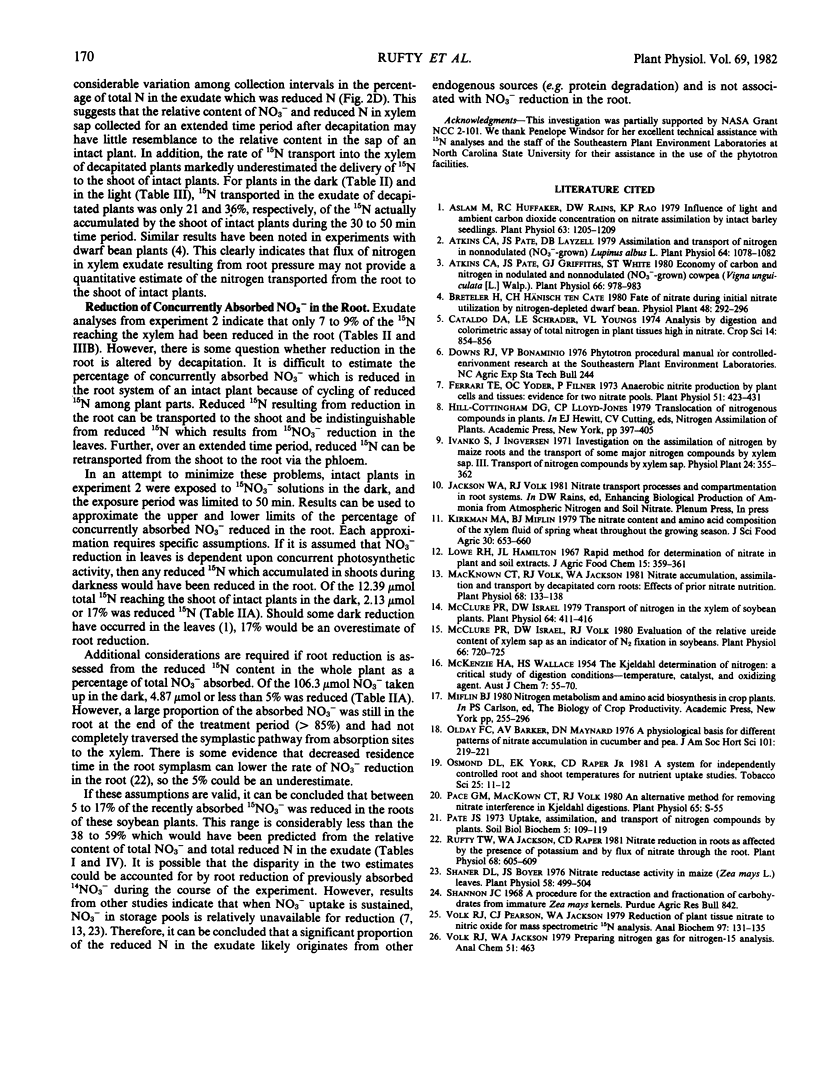
Selected References
These references are in PubMed. This may not be the complete list of references from this article.
- Aslam M., Huffaker R. C., Rains D. W., Rao K. P. Influence of light and ambient carbon dioxide concentration on nitrate assimilation by intact barley seedlings. Plant Physiol. 1979 Jun;63(6):1205–1209. doi: 10.1104/pp.63.6.1205. [DOI] [PMC free article] [PubMed] [Google Scholar]
- Atkins C. A., Pate J. S., Griffiths G. J., White S. T. Economy of Carbon and Nitrogen in Nodulated and Nonnodulated (NO(3)-grown) Cowpea [Vigna unguiculata (L.) Walp.]. Plant Physiol. 1980 Nov;66(5):978–983. doi: 10.1104/pp.66.5.978. [DOI] [PMC free article] [PubMed] [Google Scholar]
- Atkins C. A., Pate J. S., Layzell D. B. Assimilation and Transport of Nitrogen in Nonnodulated (NO(3)-grown) Lupinus albus L. Plant Physiol. 1979 Dec;64(6):1078–1082. doi: 10.1104/pp.64.6.1078. [DOI] [PMC free article] [PubMed] [Google Scholar]
- Ferrari T. E., Yoder O. C., Filner P. Anaerobic nitrite production by plant cells and tissues: evidence for two nitrate pools. Plant Physiol. 1973 Mar;51(3):423–431. doi: 10.1104/pp.51.3.423. [DOI] [PMC free article] [PubMed] [Google Scholar]
- Mackown C. T., Volk R. J., Jackson W. A. Nitrate Accumulation, Assimilation, and Transport by Decapitated Corn Roots : EFFECTS OF PRIOR NITRATE NUTRITION. Plant Physiol. 1981 Jul;68(1):133–138. doi: 10.1104/pp.68.1.133. [DOI] [PMC free article] [PubMed] [Google Scholar]
- McClure P. R., Israel D. W. Transport of nitrogen in the xylem of soybean plants. Plant Physiol. 1979 Sep;64(3):411–416. doi: 10.1104/pp.64.3.411. [DOI] [PMC free article] [PubMed] [Google Scholar]
- McClure P. R., Israel D. W., Volk R. J. Evaluation of the Relative Ureide Content of Xylem Sap as an Indicator of N(2) Fixation in Soybeans: GREENHOUSE STUDIES. Plant Physiol. 1980 Oct;66(4):720–725. doi: 10.1104/pp.66.4.720. [DOI] [PMC free article] [PubMed] [Google Scholar]
- Rufty T. W., Jackson W. A., Raper C. D. Nitrate Reduction in Roots as Affected by the Presence of Potassium and by Flux of Nitrate through the Roots. Plant Physiol. 1981 Sep;68(3):605–609. doi: 10.1104/pp.68.3.605. [DOI] [PMC free article] [PubMed] [Google Scholar]
- Shaner D. L., Boyer J. S. Nitrate Reductase Activity in Maize (Zea mays L.) Leaves: I. Regulation by Nitrate Flux. Plant Physiol. 1976 Oct;58(4):499–504. doi: 10.1104/pp.58.4.499. [DOI] [PMC free article] [PubMed] [Google Scholar]
- Volk R. J., Pearson C. J., Jackson W. A. Reduction of plant tissue nitrate to nitric oxide for mass spectrometric 15N analysis. Anal Biochem. 1979 Aug;97(1):131–135. doi: 10.1016/0003-2697(79)90336-1. [DOI] [PubMed] [Google Scholar]


